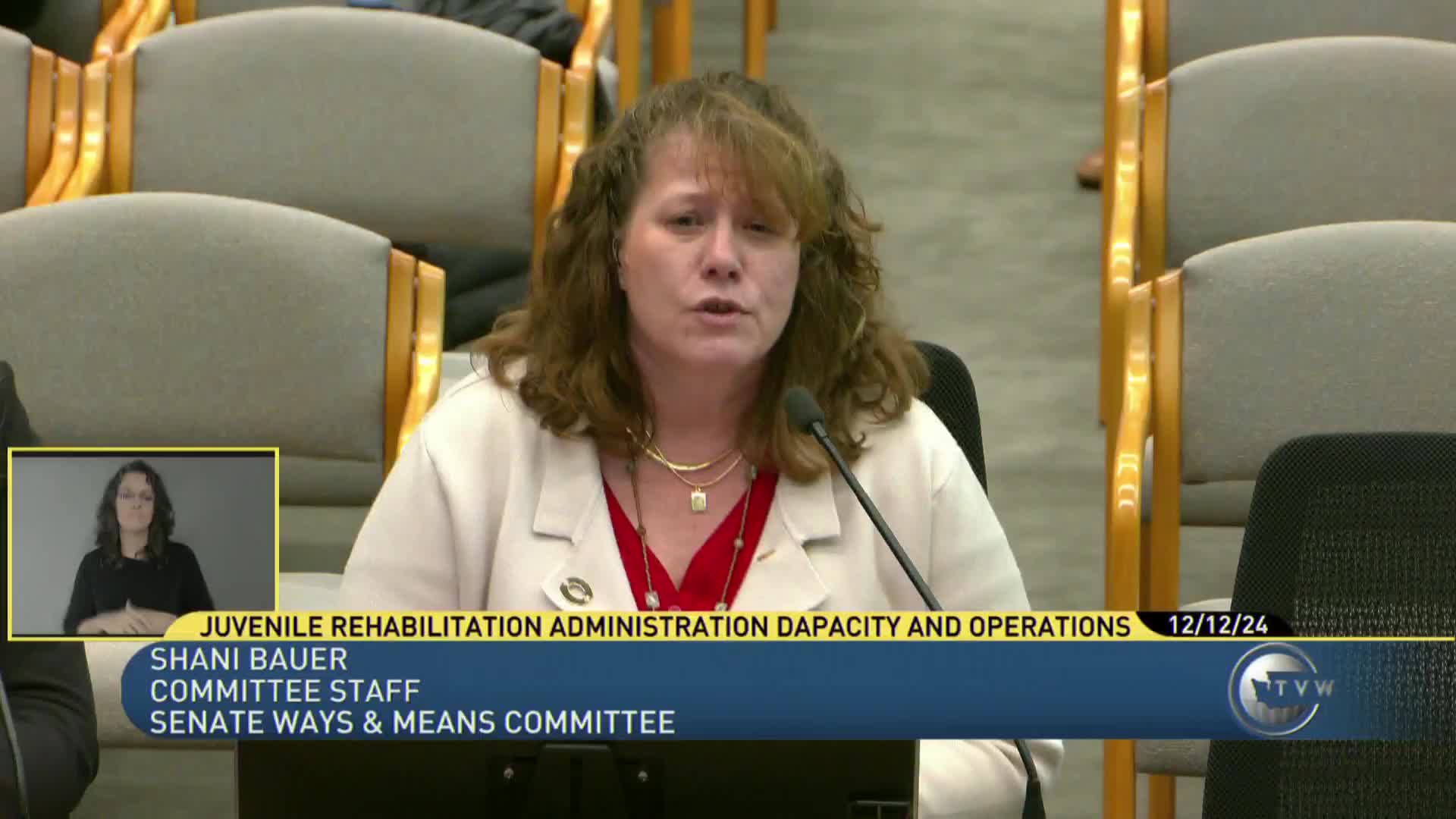Washington juvenile facilities face overcrowding crisis as reforms struggle to manage rising youth crime
December 12, 2024 | Ways & Means, Senate, Legislative Sessions, Washington
This article was created by AI summarizing key points discussed. AI makes mistakes, so for full details and context, please refer to the video of the full meeting. Please report any errors so we can fix them. Report an error »

Washington State's juvenile rehabilitation facilities are facing significant challenges as discussions at the Senate Ways & Means Committee meeting on December 12, 2024, highlighted ongoing issues of overcrowding, staffing shortages, and the need for enhanced security measures.
The meeting revealed that Green Hill School in Chehalis and Echo Glen Children's Center in Snoqualmie are currently operating above their intended capacities. Green Hill, which houses older male youth and young adults, has seen a spike in its population, with reports indicating that it is now accommodating 60 to 70 young men in spaces designed for fewer. This overcrowding has raised concerns about safety and the ability to provide adequate programming and support.
In response to these challenges, the state has invested heavily in renovations and security upgrades. Notably, $6.6 million was allocated for the renovation of the Baker North living unit at Green Hill, which reduced its capacity from 20 to 16 beds. Additionally, security enhancements at Echo Glen, including perimeter fencing, were implemented following several escape incidents.
The committee also discussed the implications of the "JR to 25" legislation, which allows youth convicted of serious offenses to remain in juvenile rehabilitation until the age of 25. This policy change has resulted in an increase in the average age of residents and a higher proportion of those entering with felony offenses. Preliminary reports indicate that while rehabilitative programming has increased, there has also been a rise in incidents of misconduct and aggression among residents.
Staffing remains a critical issue, with vacancy rates reported at 21.2% for Green Hill and 10% for Echo Glen. The department is actively working to fill these positions through recruitment events and training programs, but the high turnover rates complicate efforts to maintain a stable workforce.
Looking ahead, the Department of Children, Youth, and Families (DCYF) is exploring options to expand capacity, including the potential opening of a new 48-bed facility at Stafford Creek. The agency is also considering policy solutions to prevent youth from entering the system and to enhance community support for at-risk young people.
As the state grapples with these pressing issues, the discussions from the Senate meeting underscore the urgent need for effective strategies to address the complexities of juvenile rehabilitation in Washington. The outcomes of these initiatives will be closely monitored as stakeholders seek to improve conditions for both residents and staff in the coming months.
The meeting revealed that Green Hill School in Chehalis and Echo Glen Children's Center in Snoqualmie are currently operating above their intended capacities. Green Hill, which houses older male youth and young adults, has seen a spike in its population, with reports indicating that it is now accommodating 60 to 70 young men in spaces designed for fewer. This overcrowding has raised concerns about safety and the ability to provide adequate programming and support.
In response to these challenges, the state has invested heavily in renovations and security upgrades. Notably, $6.6 million was allocated for the renovation of the Baker North living unit at Green Hill, which reduced its capacity from 20 to 16 beds. Additionally, security enhancements at Echo Glen, including perimeter fencing, were implemented following several escape incidents.
The committee also discussed the implications of the "JR to 25" legislation, which allows youth convicted of serious offenses to remain in juvenile rehabilitation until the age of 25. This policy change has resulted in an increase in the average age of residents and a higher proportion of those entering with felony offenses. Preliminary reports indicate that while rehabilitative programming has increased, there has also been a rise in incidents of misconduct and aggression among residents.
Staffing remains a critical issue, with vacancy rates reported at 21.2% for Green Hill and 10% for Echo Glen. The department is actively working to fill these positions through recruitment events and training programs, but the high turnover rates complicate efforts to maintain a stable workforce.
Looking ahead, the Department of Children, Youth, and Families (DCYF) is exploring options to expand capacity, including the potential opening of a new 48-bed facility at Stafford Creek. The agency is also considering policy solutions to prevent youth from entering the system and to enhance community support for at-risk young people.
As the state grapples with these pressing issues, the discussions from the Senate meeting underscore the urgent need for effective strategies to address the complexities of juvenile rehabilitation in Washington. The outcomes of these initiatives will be closely monitored as stakeholders seek to improve conditions for both residents and staff in the coming months.
View full meeting
This article is based on a recent meeting—watch the full video and explore the complete transcript for deeper insights into the discussion.
View full meeting
